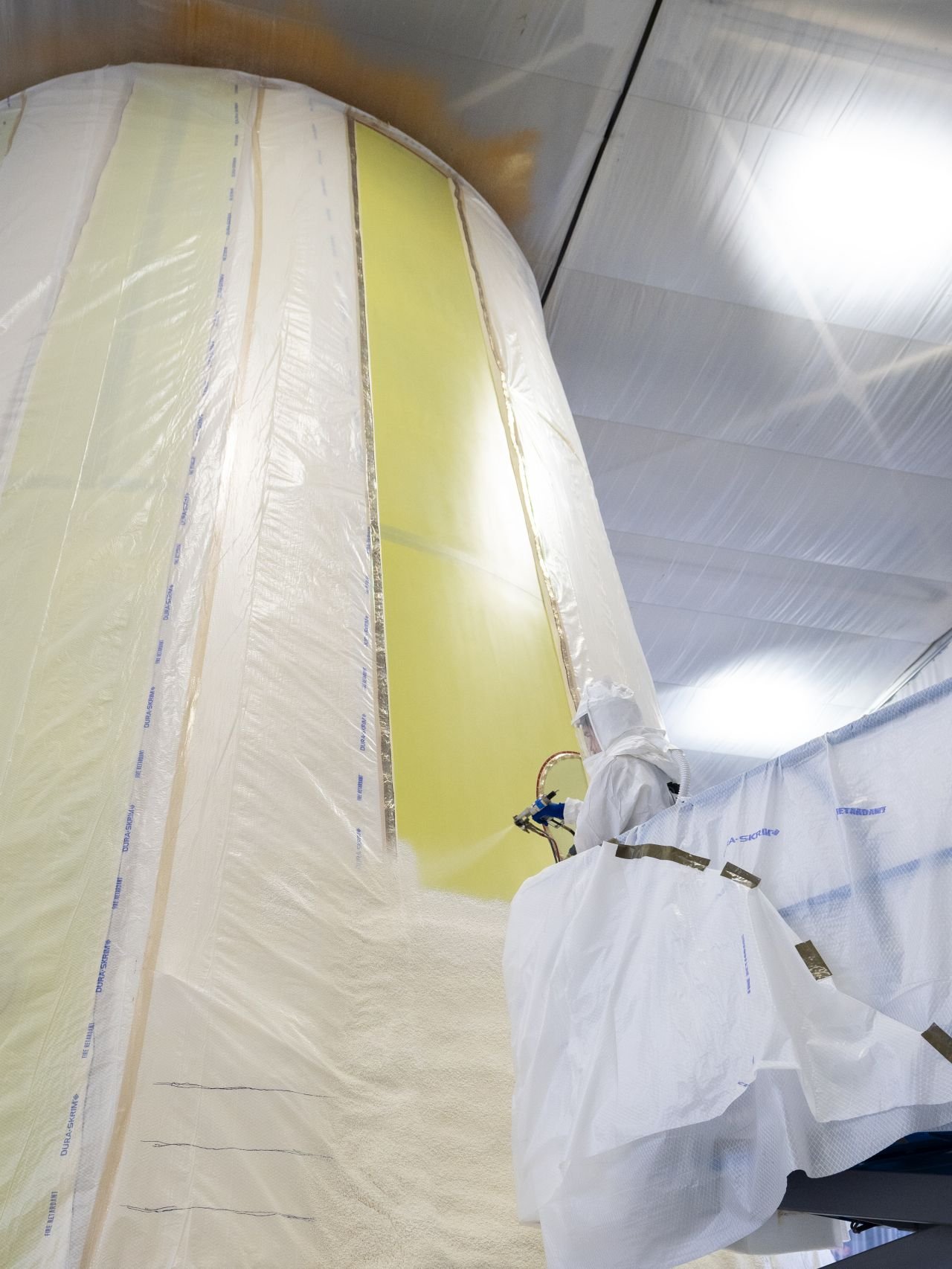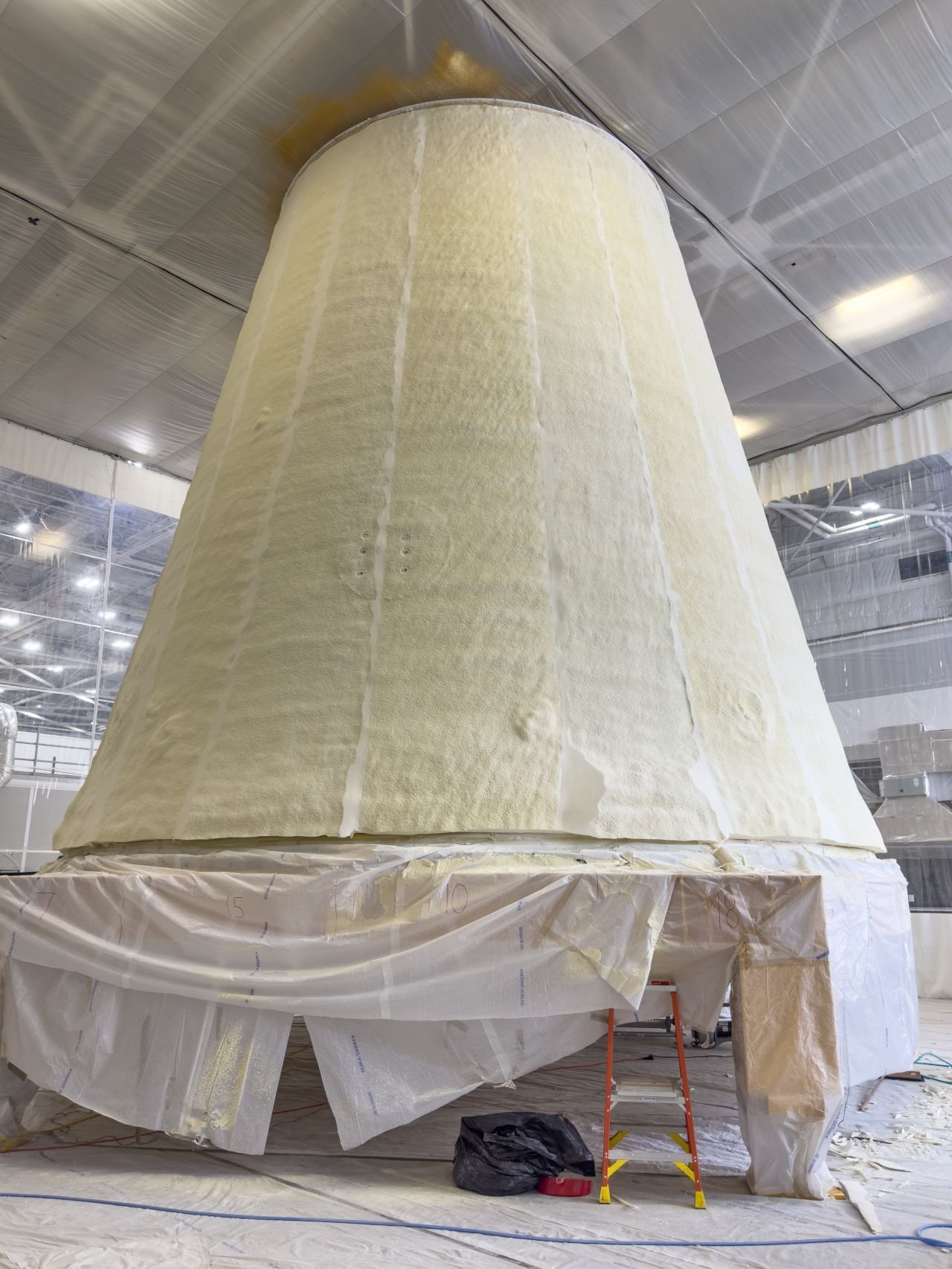Technicians at NASA’s Marshall Space Flight Center in Huntsville, Alabama, have completed applying thermal protection system material to the launch vehicle stage adapter (LVSA) of NASA’s SLS (Space Launch System) rocket for Artemis III.
The massive core stage for NASA’s Space Launch System (SLS) rocket is in the B-2 Test Stand at NASA’s Stennis Space Center near Bay St. Louis, Mississippi. Image credits: NASA
Artemis III will land astronauts on the Moon to advance long-term lunar exploration and scientific discovery and inspire the Artemis Generation.
The LVSA is a cone-shaped element connecting the mega rocket’s core stage to its interim cryogenic propulsion stage (ICPS), partially enclosing it and protecting its avionics and electrical systems from the extreme pressures, sounds, and temperatures during launch and flight.

Thermal protection system material applied to the launch vehicle stage adapter (LVSA) of NASA’s SLS (Space Launch System) rocket for Artemis III. Image credit: NASA/Brandon Hancock
Teams at Marshall began applying the thermal protection system material earlier this spring. Unlike other parts of the SLS rocket, the thermal protection system material for the LVSA is applied entirely by hand using a spray gun.
During application, the technicians use a thin measuring rod to gauge the proper thickness. Once the thermal protection system has cured, certain areas are sanded down to meet parameters. The entire process takes several months.

Thermal protection system material applied to the launch vehicle stage adapter (LVSA) of NASA’s SLS (Space Launch System) rocket for Artemis III. Image credit: NASA/Brandon Hancock
The LVSA is fully manufactured at Marshall by NASA, lead contractor Teledyne Brown Engineering, and the Jacobs Space Exploration Group’s ESSCA contract. The LVSA for Artemis III is the last of its kind as future SLS rockets will transition to its next, more powerful Block 1B configuration beginning with Artemis IV.
NASA is working to land the first woman and first person of color on the Moon under Artemis. SLS is part of NASA’s backbone for deep space exploration, along with the Orion spacecraft, advanced spacesuits and rovers, the Gateway in orbit around the Moon, and commercial human landing systems. SLS is the only rocket that can send Orion, astronauts, and supplies to the Moon in a single mission.
Source: National Aeronautics and Space Administration

